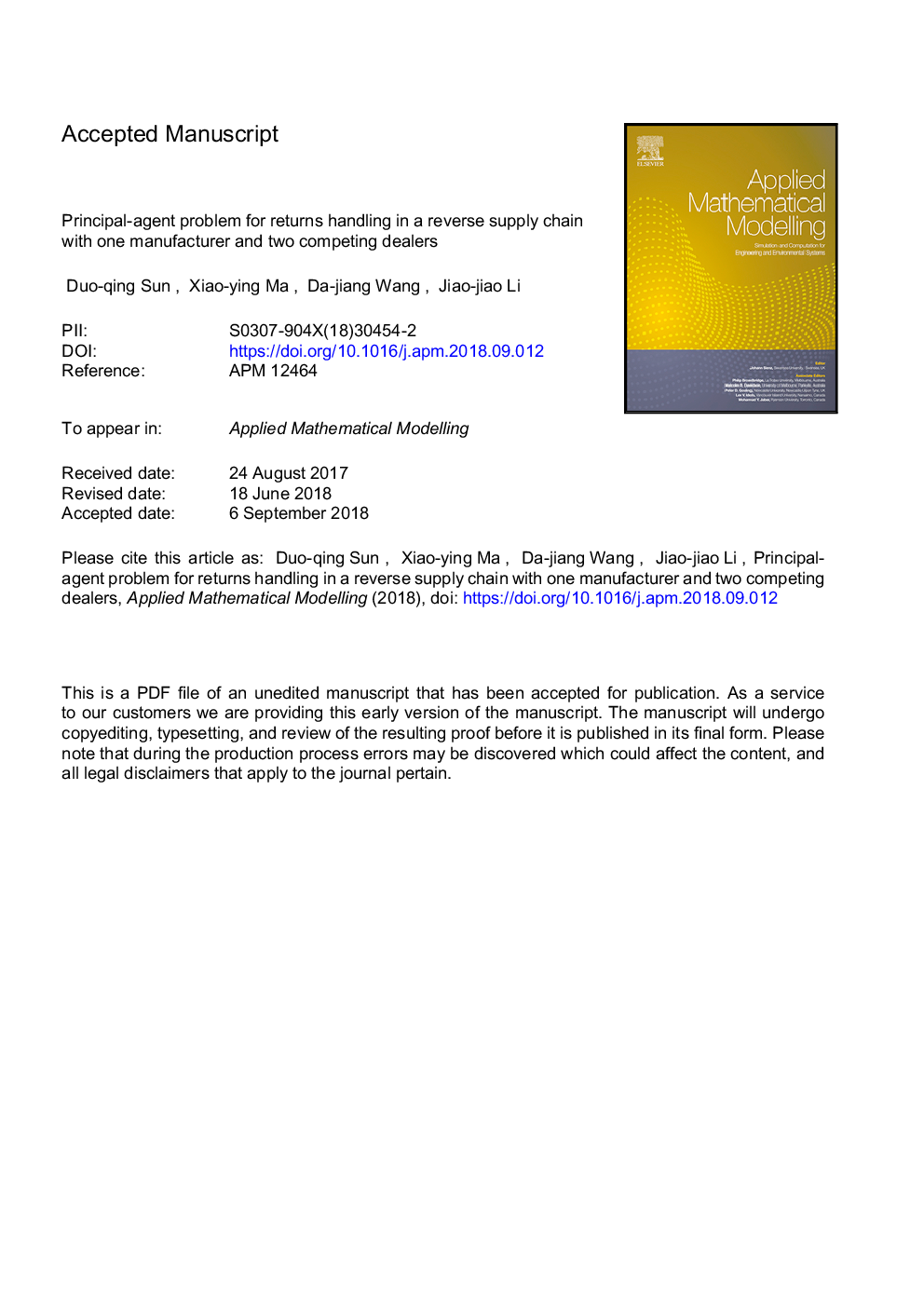| Article ID | Journal | Published Year | Pages | File Type |
|---|---|---|---|---|
| 11026483 | Applied Mathematical Modelling | 2019 | 42 Pages |
Abstract
Focusing on the principal-agent problem in handling new-products returned by customers in a reverse supply chain with one manufacturer and two competing dealers, we investigate how a manufacturer motivates her dealers to exert their efforts to handle and sell the returned new-products using mathematical modelling. By taking into consideration the dealers' individual rationalities, we design optimal incentive contracts under both symmetric and asymmetric information and obtain the following insights. In the symmetric information situation, dealers' effort levels are identical to those maximising the expected overall profit of the supply chain. In the asymmetric information situation, however, the dealers' effort levels are lower than the supply chain optimum. Further, in the case of intensifying competition between the dealers, their effort levels increase, while each dealer' revenue share received from the manufacturer decreases and the risk, incentive and total agency costs of the entire supply chain tend to diminish. The revenue share is inversely correlated with return uncertainties. When we introduce another random environmental factor affecting returns into the incentive contract, this revenue share increases with a rise in dealers' effort levels, while the above-mentioned costs of the entire system decline and this improves the supply chain system coordination. The incorporation of fairness into the principal-agent model promotes a further increase in the dealers' effort levels, which is proved using the fixed-point theorem. Finally, we provide an example to demonstrate the main results.
Keywords
Related Topics
Physical Sciences and Engineering
Engineering
Computational Mechanics
Authors
Sun Duo-qing, Ma Xiao-ying, Wang Da-jiang, Li Jiao-jiao,
